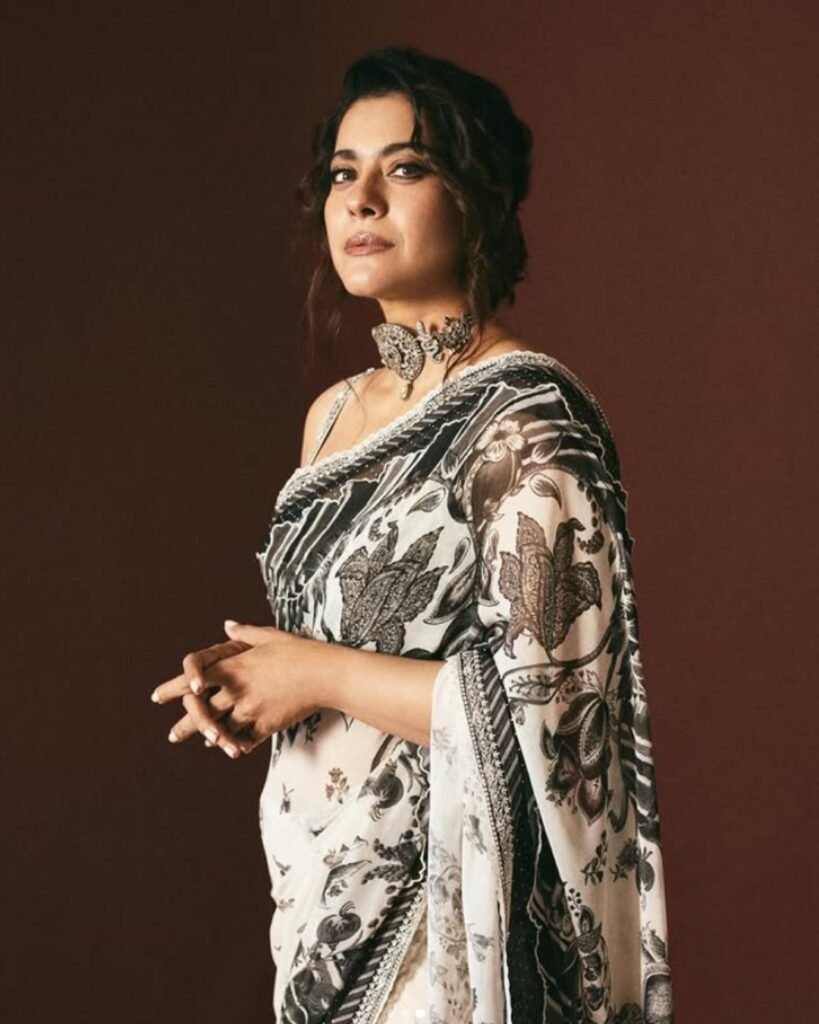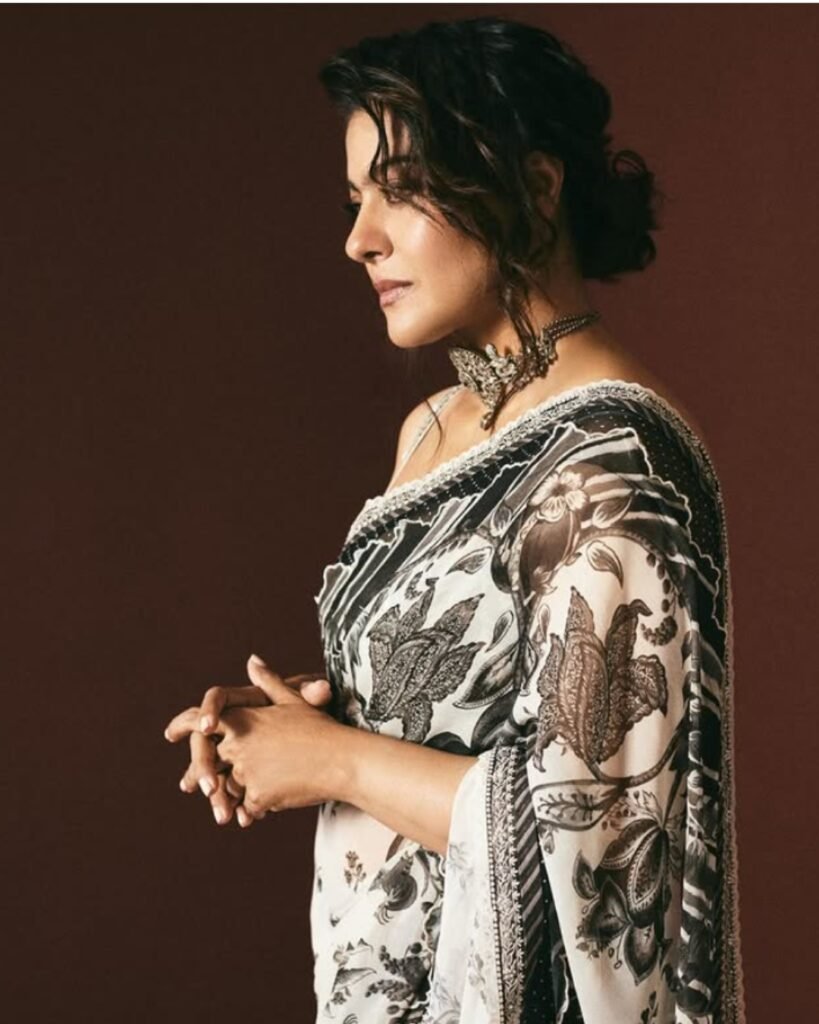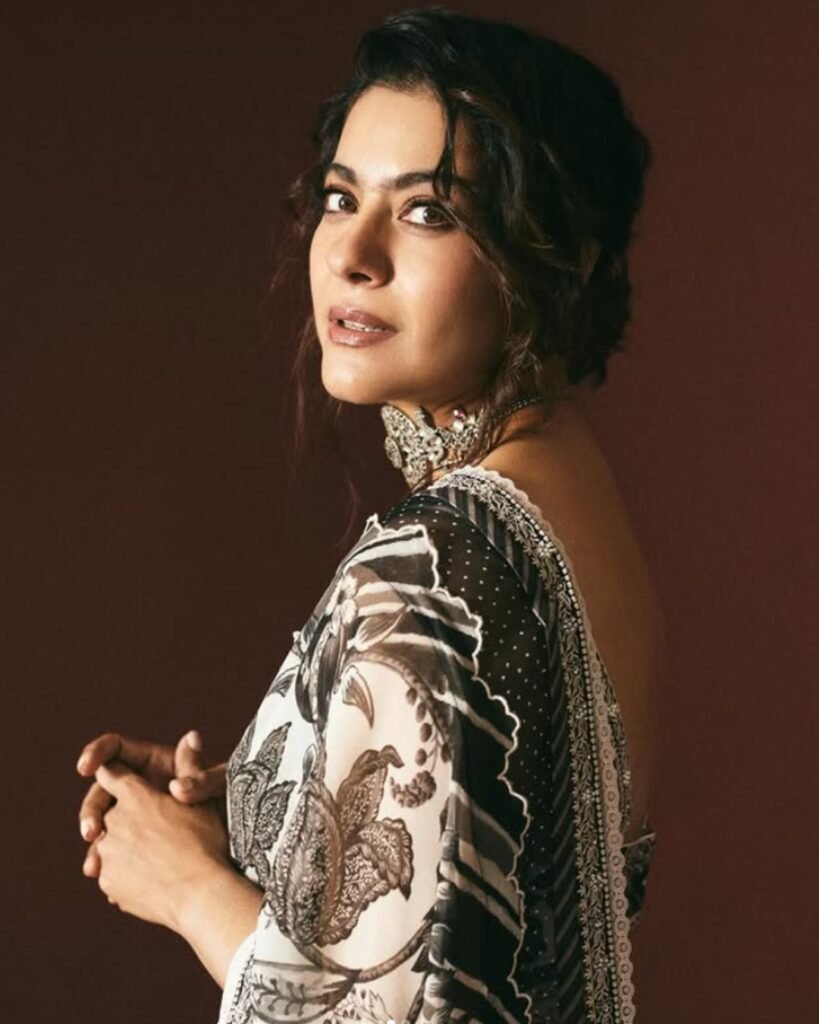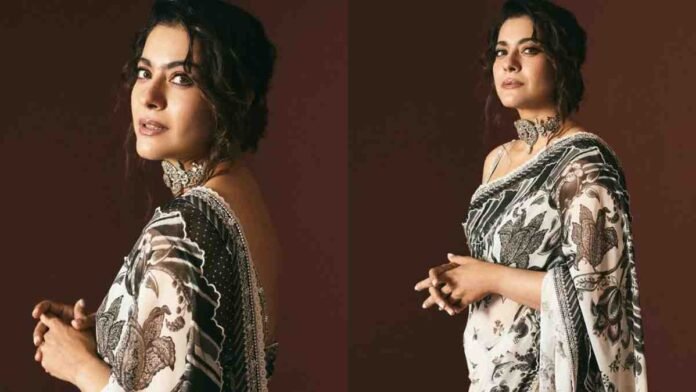Kajol who Radhika Mehra styled for an editorial shoot is wearing a Torani sari with a black and white design and a bold Tribe Amrapali oxidized choker. This style is indicative of a growing trend in Indian fashion, where the past is cited for depth rather than nostalgia.
Hand-illustrated floral and bird designs in inky black are printed on ivory and framed by chevron borders, stripes, and polka dots on the georgette and butterfly net foundation of the sari. The draping has a hint of glitter from a delicate thread of embroidery. The blouse, which is largely hidden, has a delicate sweetheart neckline and lace-detailed straps that are both subtle enough to complement the print and structured enough to define the silhouette.

Prints with a narrative focus are becoming popular again among designers. From House of Masaba’s maximalist canvases to Valentino’s enormous flowers, designers are going back to textile storytelling and narrative-driven motifs. Personal recollections and cultural allusions—such as botanical illustrations from the Mughal era, household items, and life textures—have influenced Torani’s visual world. His saris, which are dyed using palettes that allude to the sun, smoke, foam, or clay, frequently feel like pieces from a dream.

Here, the black-and-white color scheme highlights both the form’s simplicity and its underlying emotion. The print has an archival quality, as if it were taken from Indian noir films or old family albums. The oxidized choker breaks the monotony without detracting from the mood by adding weight and edge. Kajol’s skin is glowing but not overpowering; her hair is pulled back in an easy bun, with her tendrils left loose.

With its roots in tradition and modern styling, Kajol’s ensemble captures, in a single frame, the essence of Indian fashion today, where tradition meets modernity and revival meets runway appeal.



